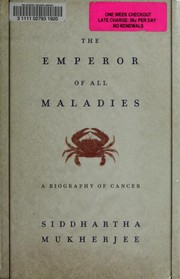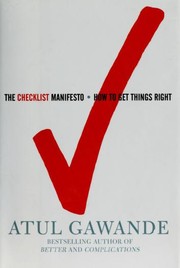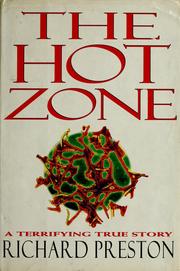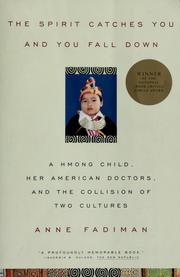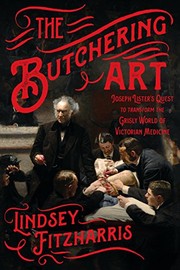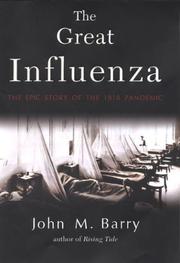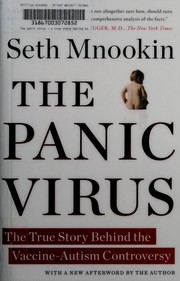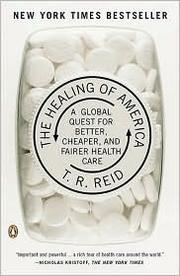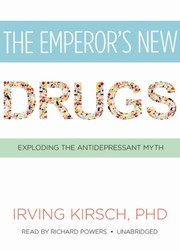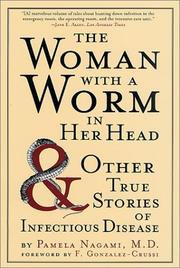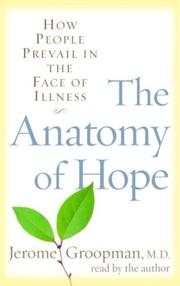Are you a high school student with a passion for medicine? Whether you’re considering a future in healthcare or simply want to expand your knowledge, there are plenty of captivating books on medicine for high school students to explore. From personal memoirs to in-depth explorations of medical breakthroughs, these 20 books offer insights into the fascinating world of healthcare. Let’s dive into the top titles that will inspire and educate you on your journey to understanding the field of medicine.
Contents
- 1 20 Best Books About Medicine For High School Students
- 2 The Gene: An Intimate History
- 3 Being Mortal: Medicine and What Matters in the End
- 4 The Emperor of All Maladies: A Biography of Cancer
- 5 When Breath Becomes Air
- 6 The Checklist Manifesto: How to Get Things Right
- 7 The Immortal Life of Henrietta Lacks
- 8 The Man Who Touched His Own Heart: True Tales of Science, Surgery, and Mystery
- 9 The Hot Zone: The Terrifying True Story of the Origins of the Ebola Virus
- 10 The Spirit Catches You and You Fall Down: A Hmong Child, Her American Doctors, and the Collision of Two Cultures
- 11 The Brain that Changes Itself: Stories of Personal Triumph from the Frontiers of Brain Science
- 12 The Birth of the Pill: How Four Crusaders Reinvented Sex and Launched a Revolution
- 13 The Butchering Art: Joseph Lister’s Quest to Transform the Grisly World of Victorian Medicine
- 14 The Great Influenza: The Story of the Deadliest Pandemic in History
- 15 The Panic Virus: A True Story of Medicine, Science, and Fear
- 16 The Healing of America: A Global Quest for Better, Cheaper, and Fairer Health Care
- 17 The Emperor’s New Drugs: Exploding the Antidepressant Myth
- 18 The Woman with a Worm in Her Head: And Other True Stories of Infectious Disease
- 19 How Doctors Think
- 20 The Anatomy of Hope: How People Prevail in the Face of Illness
- 21 The Spirit Catches You and You Fall Down
- 22 Conclusion
- 23
20 Best Books About Medicine For High School Students
The Gene: An Intimate History
by Siddhartha Mukherjee
The Gene: An Intimate History by Siddhartha Mukherjee is a captivating exploration of the history and science of genetics. This compelling book delves into the complex world of genetics, offering a fascinating look at the impact of genes on our lives and the intricate mechanisms that govern heredity. With a blend of personal stories, scientific discoveries, and ethical dilemmas, Mukherjee provides a comprehensive and accessible account of the profound implications of genetics. This book is perfect for high school students interested in the field of genetics, as it presents the subject matter in an engaging and informative manner. Whether you’re a budding scientist or simply curious about the inner workings of our genetic code, The Gene is a must-read for anyone intrigued by the intricacies of inheritance and heredity.
Being Mortal: Medicine and What Matters in the End
by Atul Gawande
Being Mortal is a thought-provoking book on medicine for high school students that explores the intersection of medicine and humanity. Atul Gawande, a practicing surgeon, delves into the complexities of end-of-life care and the significance of quality of life in the face of mortality. Through poignant real-life stories and medical research, Gawande challenges the traditional approach to medicine for high school students, advocating for a more person-centered care that prioritizes individual preferences and values. This eye-opening book about medicine for high school students prompts readers to contemplate their own views on aging, illness, and death, and encourages important conversations about what truly matters at the end of life. Being Mortal is a must-read for anyone interested in the human side of medicine and the ethical considerations surrounding end-of-life care.
The Emperor of All Maladies: A Biography of Cancer
by Siddhartha Mukherjee
The Emperor of All Maladies: A Biography of Cancer by Siddhartha Mukherjee is a compelling book about the history of cancer and its treatment. Mukherjee, an oncologist, delves into the fascinating and often heartbreaking story of humanity’s battle against this relentless disease. This Pulitzer Prize-winning book provides a comprehensive overview of the history, science, and human stories behind cancer, making it a captivating and informative read for anyone interested in medicine or human health. The book is an excellent choice for high school students interested in the field of medicine, as it offers a deep and engaging exploration of the topic, providing valuable insights into the complexities of cancer and the ongoing efforts to combat it.
When Breath Becomes Air
by Paul Kalanithi
When Breath Becomes Air by Paul Kalanithi is a poignant memoir that offers a deep and insightful look into the world of medicine. This powerful book provides a unique perspective on the intersection of life and death, as experienced by a neurosurgeon who is diagnosed with terminal cancer. Through his eloquent and moving narrative, Kalanithi explores the complexities of human existence, the meaning of life, and the role of medicine in confronting mortality. This is not just a book about medicine for high school students, but a profound exploration of the human condition that is sure to resonate with readers of all ages. With its compelling storytelling and thought-provoking reflections, When Breath Becomes Air is a must-read for anyone seeking a deeper understanding of the human experience.
The Checklist Manifesto: How to Get Things Right
by Atul Gawande
The Checklist Manifesto by Atul Gawande is a compelling book on medicine for high school students that delves into the power of checklists in improving efficiency and accuracy in various fields, including medicine. Gawande, a surgeon, explores how simple checklists can prevent errors and save lives in the fast-paced, high-stakes world of healthcare. Through engaging anecdotes and case studies, he demonstrates how checklists can help professionals manage complex tasks and avoid costly mistakes. This book about medicine for high school students is a thought-provoking read that emphasizes the importance of adopting systematic approaches to problem-solving and decision-making, making it a valuable resource for anyone interested in healthcare or improving their organizational skills.
The Immortal Life of Henrietta Lacks
by Rebecca Skloot
The Immortal Life of Henrietta Lacks by Rebecca Skloot is a captivating non-fiction book that delves into the intersection of ethics, science, and race. The book tells the story of Henrietta Lacks, a poor African American woman whose cells were taken without her knowledge in 1951 and became one of the most important tools in medicine, known as HeLa cells. Skloot explores the impact of this discovery on medical research and the Lacks family, as well as the ethical implications of using a person’s cells without their consent. With a compelling narrative and thorough research, the book provides an engaging look at the history of medical ethics and the importance of informed consent. This book is a must-read for anyone interested in the intersection of science and ethics, making it a valuable resource for high school students studying medicine.
The Man Who Touched His Own Heart: True Tales of Science, Surgery, and Mystery
by Rob Dunn
The Man Who Touched His Own Heart by Rob Dunn is a captivating book on medicine for high school students that delves into the fascinating world of the human heart. Through engaging storytelling and scientific exploration, Dunn shares true tales of pioneering surgeries, groundbreaking discoveries, and medical mysteries surrounding the heart. Readers will be drawn into the world of cardiology as they learn about the history of heart surgery, the intricacies of the heart’s anatomy, and the cutting-edge research shaping modern medicine. This book about medicine for high school students is perfect for those interested in biology, anatomy, or the medical field, offering a compelling blend of science, history, and real-life stories that will leave readers with a newfound appreciation for the incredible organ that keeps us all alive.
The Hot Zone: The Terrifying True Story of the Origins of the Ebola Virus
by Richard Preston
The Hot Zone by Richard Preston is a gripping non-fiction book about the origins of the Ebola virus. It provides a terrifying and eye-opening account of the deadly virus and the potential threats it poses to humanity. The book takes readers on a thrilling journey through the discovery and containment of Ebola, shedding light on the dangers of emerging infectious diseases. With its vivid storytelling and scientific accuracy, this book is a must-read for anyone interested in the field of infectious diseases or looking for a captivating book about medicine for high school students. It’s a perfect blend of scientific knowledge and real-life drama that will leave readers on the edge of their seats, while also providing valuable insights into the world of infectious diseases.
The Spirit Catches You and You Fall Down: A Hmong Child, Her American Doctors, and the Collision of Two Cultures
by Anne Fadiman
The Spirit Catches You and You Fall Down is a captivating exploration of the clash between Western medicine and Hmong cultural beliefs. Anne Fadiman’s book delves into the story of a Hmong child with epilepsy and her American doctors, highlighting the challenges that arise when two vastly different cultures intersect within the context of healthcare. This eye-opening narrative provides a thought-provoking look at the complexities of cross-cultural medical treatment, making it a fascinating read for anyone interested in the intersection of healthcare and cultural diversity. With its insightful examination of the collision between traditional healing practices and Western medicine, this book about medicine for high school students offers a compelling and important perspective on the impact of cultural differences on healthcare.
The Brain that Changes Itself: Stories of Personal Triumph from the Frontiers of Brain Science
by Norman Doidge
The Brain that Changes Itself by Norman Doidge is a fascinating book about medicine for high school students that explores the incredible capacity of the human brain to adapt and change. Through a series of compelling stories, Doidge delves into the frontiers of brain science, revealing how the brain can rewire itself in response to various challenges and experiences. From stroke victims learning to walk again to individuals overcoming learning disabilities, the book showcases the remarkable resilience and plasticity of the brain. Doidge’s engaging writing style and insightful research make this medicine for high school students book a captivating and inspiring read, offering a deeper understanding of the brain’s potential for transformation and personal triumph.
The Birth of the Pill: How Four Crusaders Reinvented Sex and Launched a Revolution
by Jonathan Eig
The Birth of the Pill by Jonathan Eig is a captivating book about the development of the birth control pill, a groundbreaking achievement in the history of reproductive medicine. Eig tells the compelling story of four individuals who played pivotal roles in creating the pill and revolutionizing attitudes towards sex and contraception. Through meticulous research and engaging storytelling, Eig provides a vivid portrayal of the social, cultural, and scientific context in which the pill was conceived and introduced. This book is an insightful and educational read for anyone interested in the history of reproductive health and the impact of medical innovation on society. It is an excellent choice for high school students looking to explore the fascinating intersection of science, medicine, and social change.
The Butchering Art: Joseph Lister’s Quest to Transform the Grisly World of Victorian Medicine
by Lindsey Fitzharris
The Butchering Art: Joseph Lister’s Quest to Transform the Grisly World of Victorian Medicine by Lindsey Fitzharris is a captivating book about medicine for high school students that delves into the gruesome world of 19th-century surgery. Fitzharris explores the pioneering work of Joseph Lister, who revolutionized the field of surgery by introducing antiseptic techniques to prevent infection. The book vividly portrays the horrors of surgery before Lister’s breakthrough, and the impact his methods had on saving countless lives. Through meticulous research and compelling storytelling, Fitzharris brings to life the challenges and triumphs of Victorian medicine, making it a fascinating read for anyone interested in the history of medicine. The Butchering Art is a must-read book on medicine for high school students who want to gain insight into the evolution of surgical practices and the individuals who shaped modern medical techniques.
The Great Influenza: The Story of the Deadliest Pandemic in History
by John M. Barry
The Great Influenza: The Story of the Deadliest Pandemic in History by John M. Barry is a gripping account of the 1918 flu pandemic that shook the world. This book delves into the history of medicine, public health, and the impact of the deadly virus that claimed millions of lives. Through vivid storytelling and meticulous research, Barry explores the scientific and political factors that contributed to the spread of the influenza, as well as the heroic efforts of medical professionals who fought to contain it. This compelling narrative is a must-read for anyone interested in the history of pandemics, public health, and the resilience of the human spirit. Whether you’re a high school student studying medicine or simply curious about the topic, this book provides a fascinating and educational insight into the world of infectious diseases.
The Panic Virus: A True Story of Medicine, Science, and Fear
by Seth Mnookin
The Panic Virus by Seth Mnookin is a captivating book about medicine for high school students that delves into the controversial world of vaccines and the fear surrounding them. Mnookin examines the origins of the anti-vaccine movement, tracing its roots back to a now discredited study linking vaccines to autism. Through meticulous research and compelling storytelling, he sheds light on the consequences of vaccine skepticism and the impact it has had on public health. This thought-provoking book on medicine for high school students offers a balanced exploration of the science behind vaccines and the societal forces at play. Mnookin’s engaging narrative makes this medicine for high school students book a must-read for anyone interested in understanding the intersection of science, fear, and public health.
The Healing of America: A Global Quest for Better, Cheaper, and Fairer Health Care
by T.R. Reid
The Healing of America by T.R. Reid is a captivating book that explores the global landscape of healthcare systems, offering a comprehensive look at various models from around the world. Reid delves into the complexities of different healthcare systems, comparing and contrasting their approaches to providing care. This eye-opening book provides a valuable insight into the challenges and successes of healthcare systems in different countries, making it an essential read for anyone interested in understanding the complexities of healthcare. With its accessible language and engaging storytelling, The Healing of America is a must-read for high school students interested in learning about healthcare systems and the global impact of healthcare policies. This book about medicine for high school students offers a thought-provoking perspective on the importance of accessible, affordable, and fair healthcare for all.
The Emperor’s New Drugs: Exploding the Antidepressant Myth
by Irving Kirsch
The Emperor’s New Drugs: Exploding the Antidepressant Myth by Irving Kirsch is a thought-provoking book that challenges the traditional understanding of antidepressants. Kirsch delves into the effectiveness of these medications and questions the widespread belief in their efficacy. Through compelling research and analysis, he presents a compelling argument that will make readers question what they thought they knew about antidepressants. This book is a must-read for anyone interested in psychology, psychiatry, or medication. Whether you’re a student studying psychology or simply curious about the topic, The Emperor’s New Drugs is an eye-opening read that will leave you questioning the conventional wisdom around antidepressants. It’s a book about medicine for high school students that will encourage critical thinking and spark important conversations about mental health and treatment.
The Woman with a Worm in Her Head: And Other True Stories of Infectious Disease
by Pamela Nagami
The Woman with a Worm in Her Head: And Other True Stories of Infectious Disease by Pamela Nagami is a captivating and eye-opening book about medicine for high school students. Through a collection of true stories, Nagami takes readers on a journey into the fascinating and often terrifying world of infectious diseases. From parasites to viruses, each story is filled with medical mysteries, fascinating scientific discoveries, and the human drama of those affected by these diseases. Nagami’s writing is both informative and engaging, making this book on medicine for high school students a must-read for anyone interested in the field of medicine. With its compelling narratives and insightful exploration of infectious diseases, this medicine for high school students book is sure to captivate and educate young readers.
How Doctors Think
by Jerome Groopman
How Doctors Think by Jerome Groopman is a captivating book about the art and science of medical decision-making. This insightful book provides a valuable glimpse into the minds of doctors as they diagnose and treat patients. Using real-life cases and personal experiences, Groopman delves into the complexities of medical decision-making, offering readers a deeper understanding of the challenges and uncertainties that doctors face. With its engaging storytelling and thought-provoking analysis, this book is a must-read for anyone interested in the field of medicine. Whether you’re a high school student considering a career in healthcare or simply curious about the human side of medicine, How Doctors Think offers a fascinating exploration of the intricate process of medical decision-making.
The Anatomy of Hope: How People Prevail in the Face of Illness
by Jerome Groopman
The Anatomy of Hope by Jerome Groopman is a captivating exploration of how individuals find strength and resilience in the face of illness. This insightful book delves into the power of hope and its profound impact on the healing process. Through compelling real-life stories and medical case studies, Groopman illustrates the vital role that hope plays in overcoming adversity and fighting against various medical conditions. With a compassionate and informative approach, the author offers valuable insights into the human spirit and the importance of maintaining hope even in the most challenging circumstances. The Anatomy of Hope is a must-read for anyone interested in the intersection of medicine and human experience, making it a valuable book about medicine for high school students who are curious about the human aspect of healthcare.
The Spirit Catches You and You Fall Down
by Anne Fadiman
The Spirit Catches You and You Fall Down by Anne Fadiman is an insightful and captivating book about medicine for high school students. It tells the true story of a Hmong family in California and their struggles to navigate the American healthcare system while trying to adhere to their traditional beliefs. The book delves into the clash between Western medicine and the Hmong culture, and the tragic consequences that result from miscommunication and misunderstanding. Fadiman’s narrative skillfully explores the complexities of cultural differences and the impact they can have on healthcare. Through this poignant and thought-provoking story, readers gain a deeper understanding of the challenges faced by immigrant families and the importance of cultural sensitivity in the field of healthcare. This medicine for high school students book is a must-read for anyone interested in the intersection of culture and healthcare.
Conclusion
In conclusion, these 20 books about Medicine For High School Students offer a wealth of knowledge and insight into the fascinating world of medicine. Whether you’re interested in pursuing a career in healthcare or simply want to expand your understanding of the human body, these books are sure to educate and inspire. From anatomy and physiology to medical ethics and groundbreaking discoveries, there’s something for everyone in this diverse collection. Happy reading!
Which Medicine For High School Students book is best?
The best book on Medicine For High School Students can vary with personal preference, but three widely recommended titles are:
- The Gene: An Intimate History by Siddhartha Mukherjee,
- Being Mortal: Medicine and What Matters in the End by Atul Gawande,
- The Emperor of All Maladies: A Biography of Cancer by Siddhartha Mukherjee.
Each offers valuable insights and could be a great starting point.
What are the best books to learn about Medicine For High School Students?
For those looking to learn about Medicine For High School Students, there is a wealth of literature that can provide a comprehensive understanding of the subject. Some of the most highly recommended books include:
- The Gene: An Intimate History by Siddhartha Mukherjee,
- Being Mortal: Medicine and What Matters in the End by Atul Gawande,
- The Emperor of All Maladies: A Biography of Cancer by Siddhartha Mukherjee,
- When Breath Becomes Air by Paul Kalanithi,
- The Checklist Manifesto: How to Get Things Right by Atul Gawande,
- The Immortal Life of Henrietta Lacks by Rebecca Skloot,
- The Man Who Touched His Own Heart: True Tales of Science, Surgery, and Mystery by Rob Dunn,
- The Hot Zone: The Terrifying True Story of the Origins of the Ebola Virus by Richard Preston,
- The Spirit Catches You and You Fall Down: A Hmong Child, Her American Doctors, and the Collision of Two Cultures by Anne Fadiman,
- The Brain that Changes Itself: Stories of Personal Triumph from the Frontiers of Brain Science by Norman Doidge
These books offer a range of perspectives on Medicine For High School Students, covering various aspects and approaches to the subject.
What are the best books on Medicine For High School Students?
The best books on Medicine For High School Students include:
- The Gene: An Intimate History by Siddhartha Mukherjee,
- Being Mortal: Medicine and What Matters in the End by Atul Gawande,
- The Birth of the Pill: How Four Crusaders Reinvented Sex and Launched a Revolution by Jonathan Eig,
- The Butchering Art: Joseph Lister’s Quest to Transform the Grisly World of Victorian Medicine by Lindsey Fitzharris,
- The Hot Zone: The Terrifying True Story of the Origins of the Ebola Virus by Richard Preston,
- The Immortal Life of Henrietta Lacks by Rebecca Skloot.
Each offers unique insights into the subject. While these books on the topic of Medicine For High School Students are highly regarded, it’s important to note that any list of ‘best’ books is subjective and reflects a range of opinions.
What are the best Medicine For High School Students books of all time?
Choosing the best Medicine For High School Students books of all time can vary depending on who you ask, but seven titles that are often celebrated include
- The Gene: An Intimate History by Siddhartha Mukherjee,
- Being Mortal: Medicine and What Matters in the End by Atul Gawande,
- The Checklist Manifesto: How to Get Things Right by Atul Gawande,
- The Hot Zone: The Terrifying True Story of the Origins of the Ebola Virus by Richard Preston,
- The Brain that Changes Itself: Stories of Personal Triumph from the Frontiers of Brain Science by Norman Doidge,
- The Butchering Art: Joseph Lister’s Quest to Transform the Grisly World of Victorian Medicine by Lindsey Fitzharris,
- and The Birth of the Pill: How Four Crusaders Reinvented Sex and Launched a Revolution by Jonathan Eig.
Each of these books has made a significant impact in the field of Medicine For High School Students and continues to be influential today.



